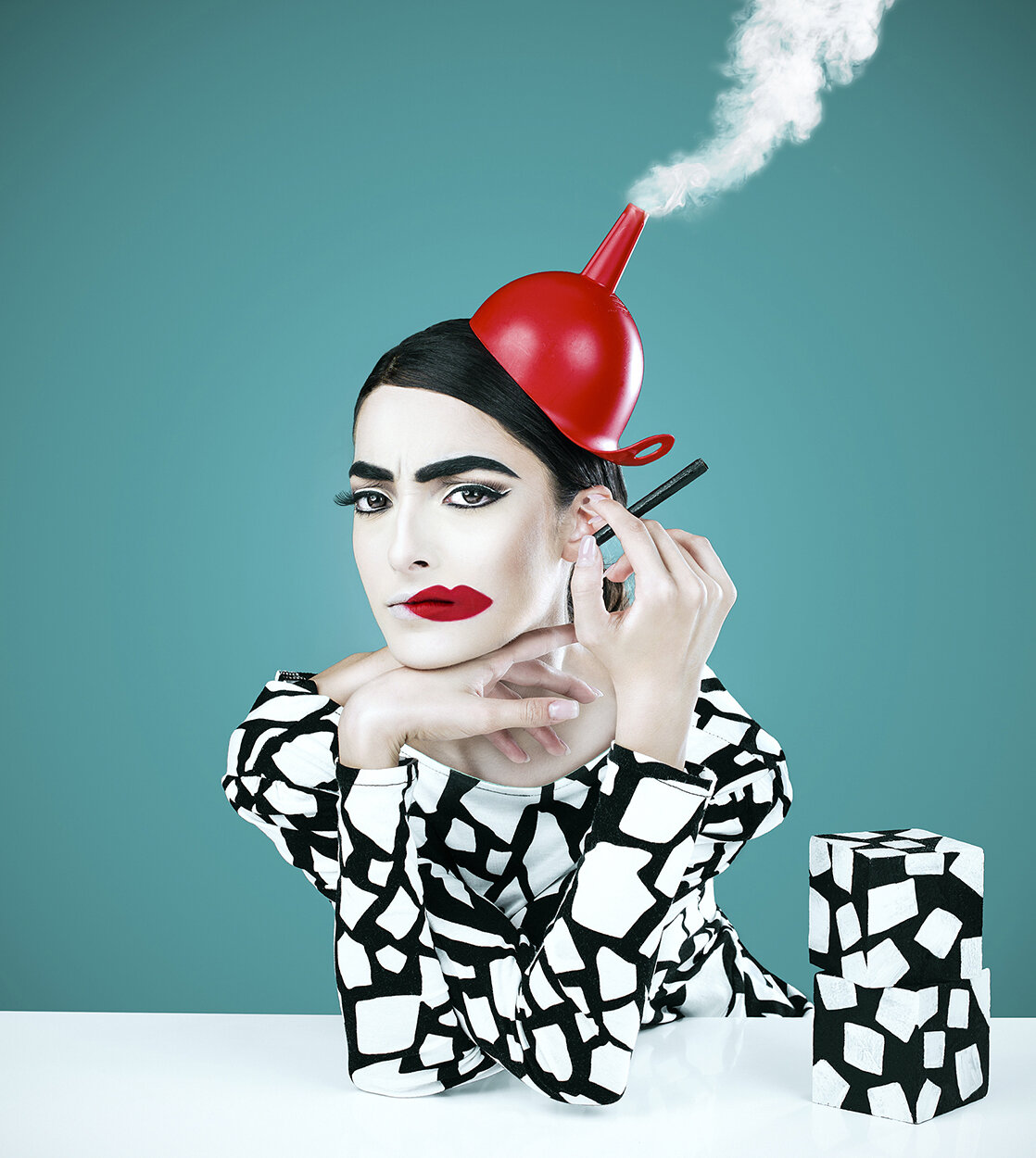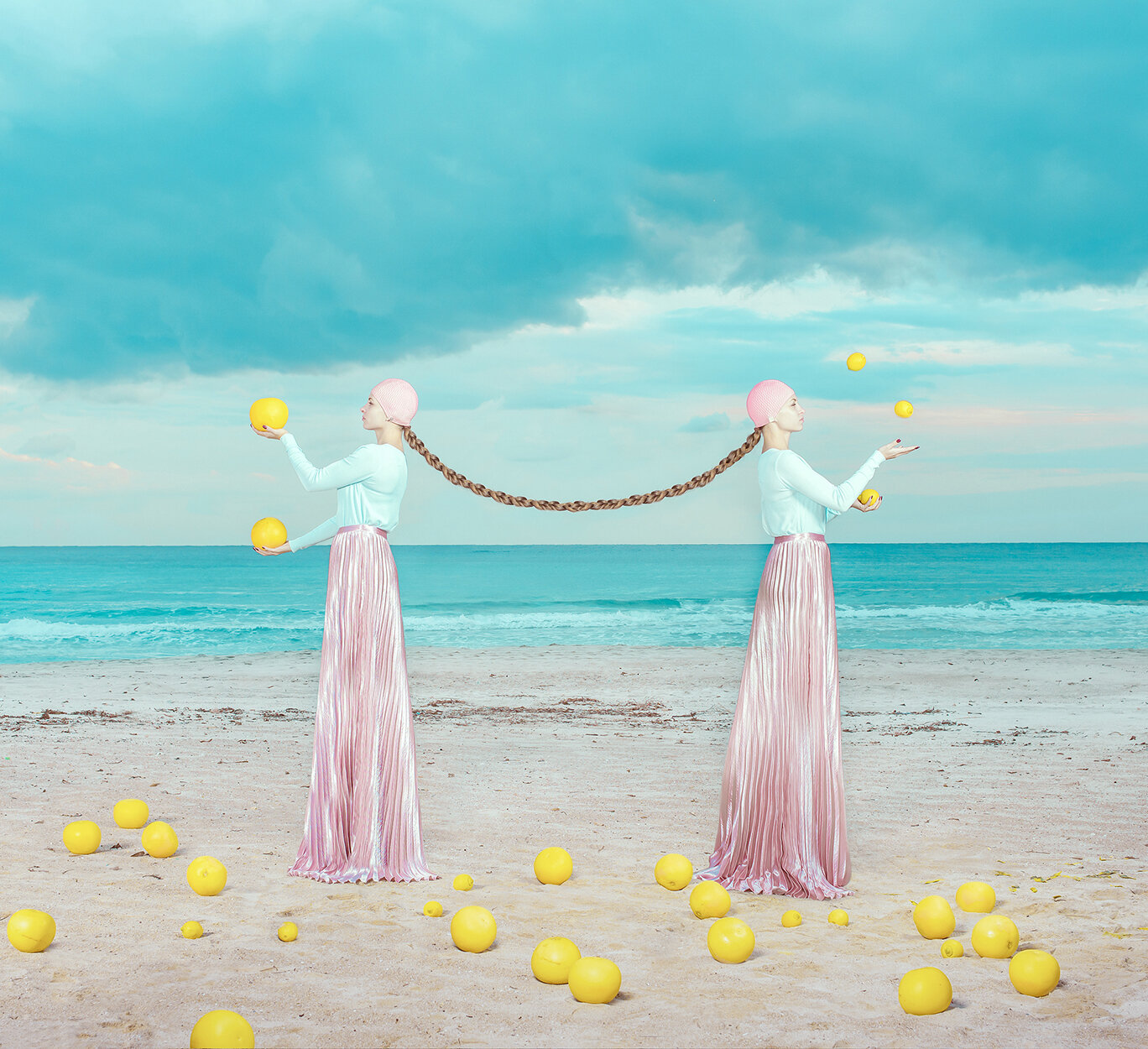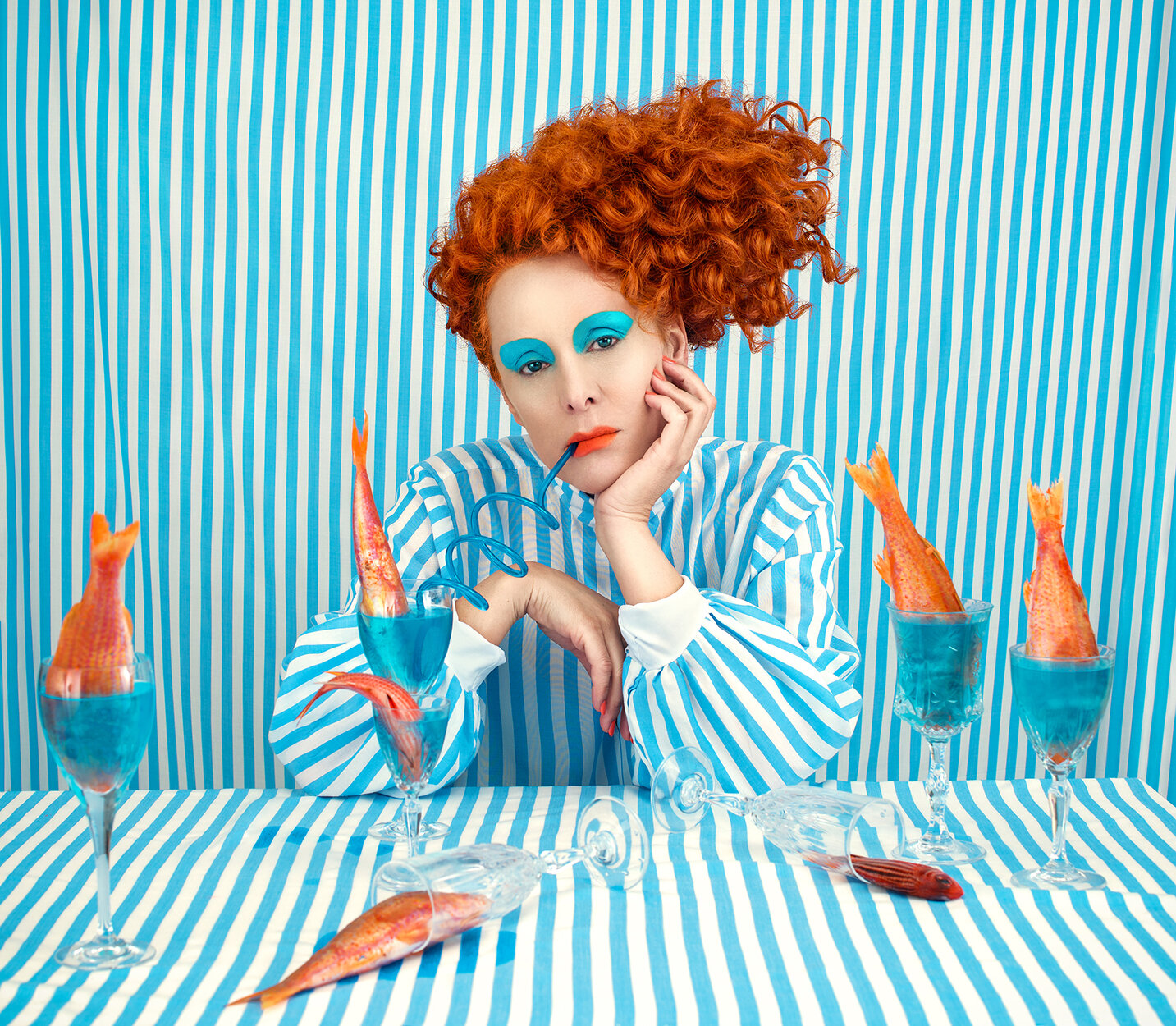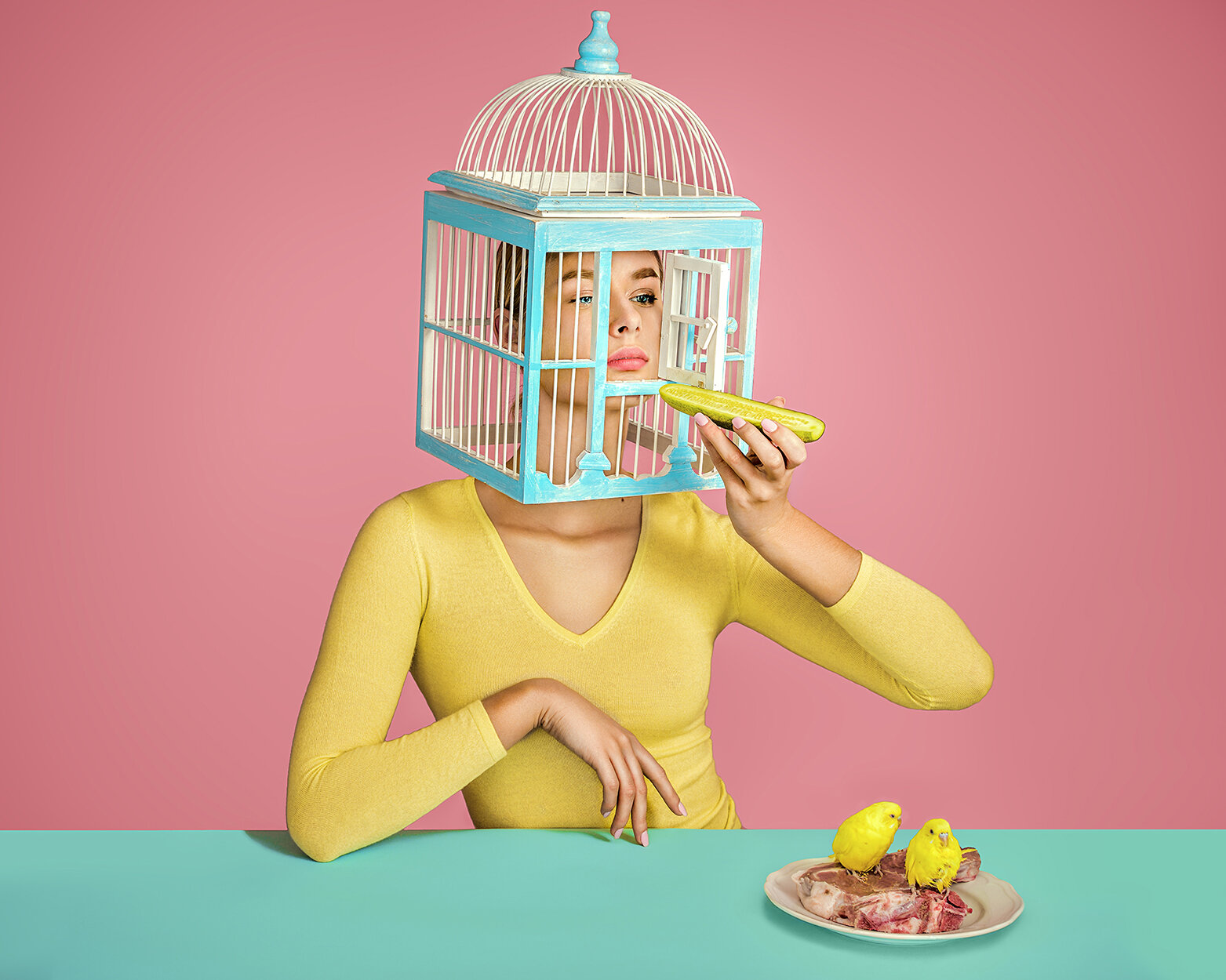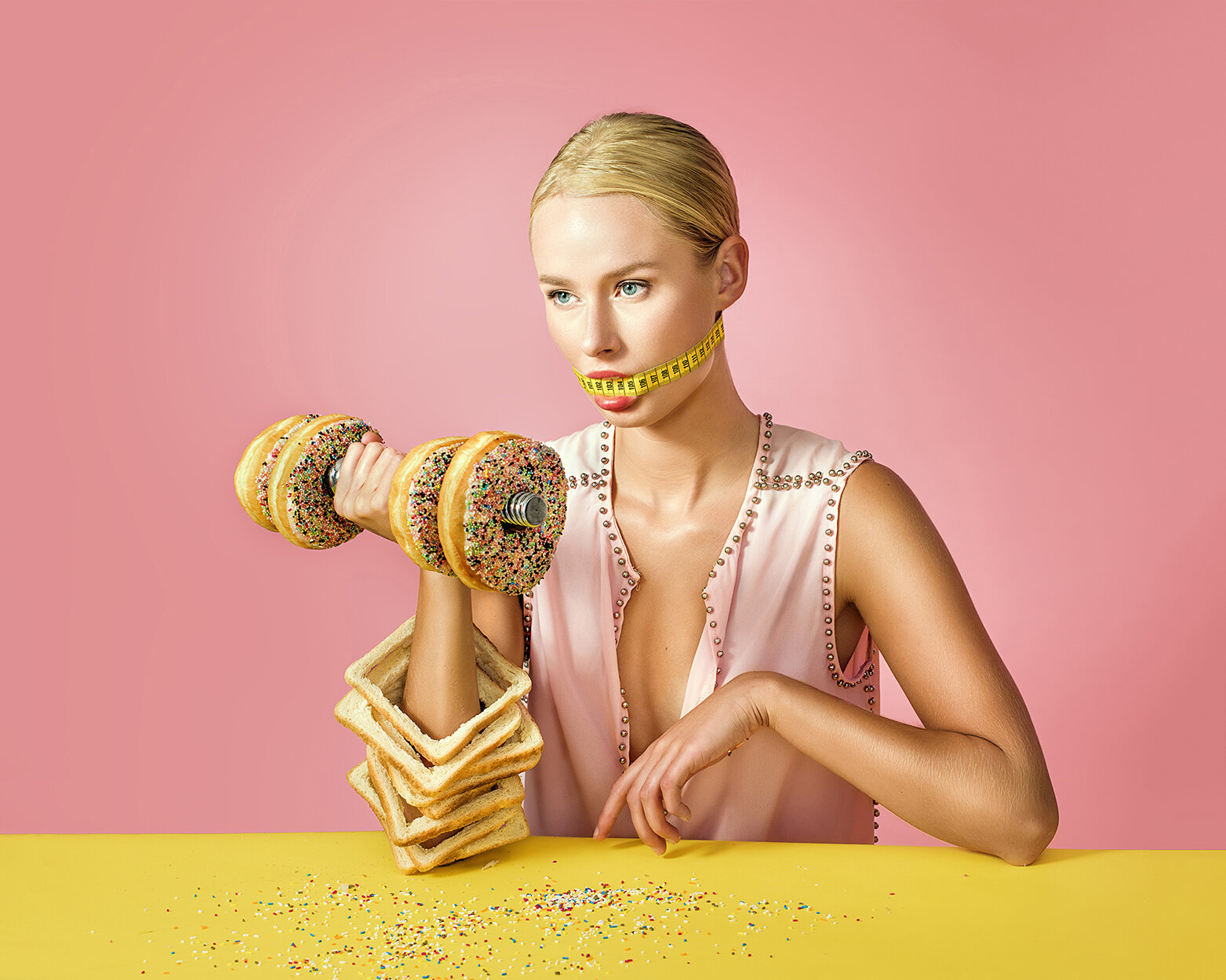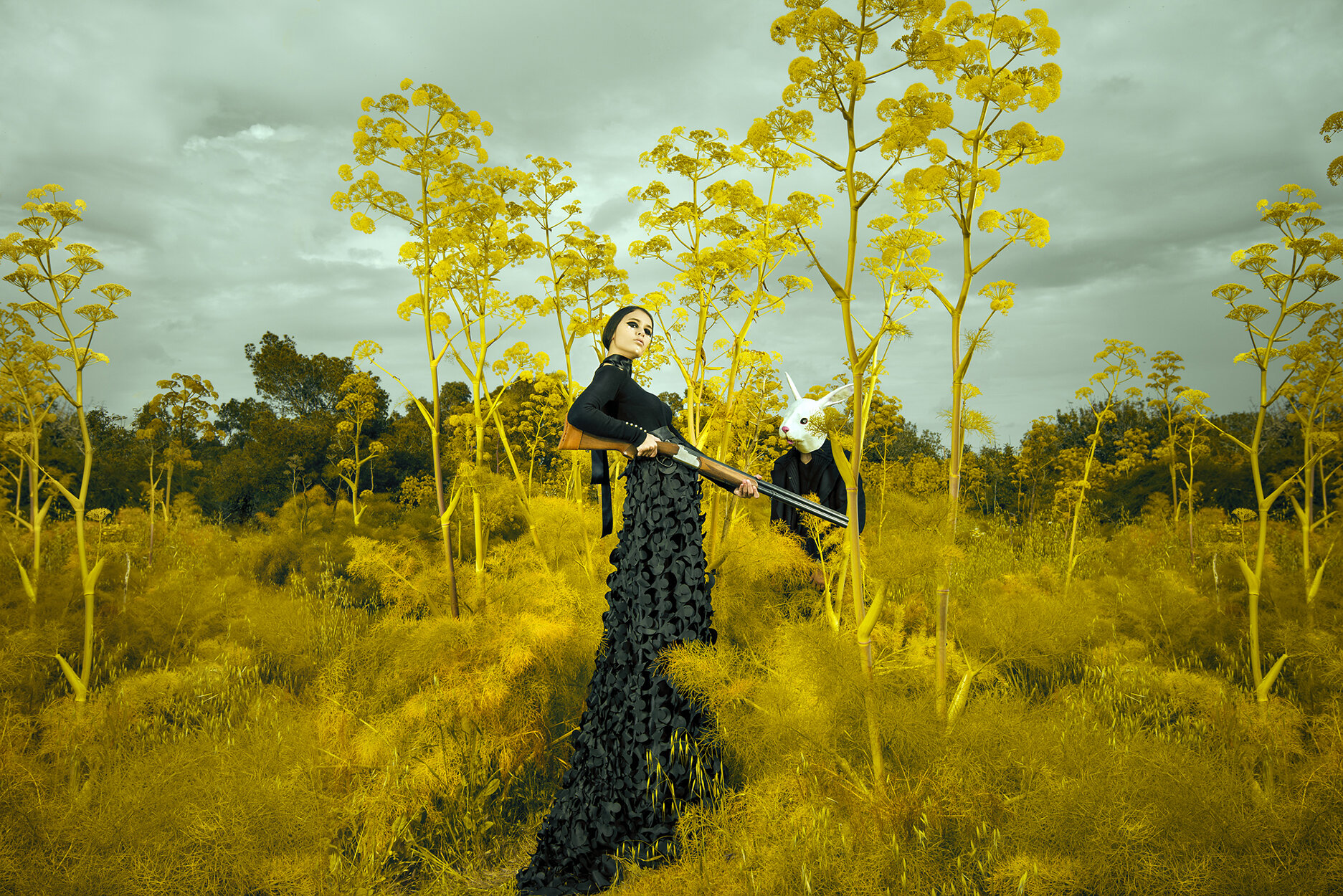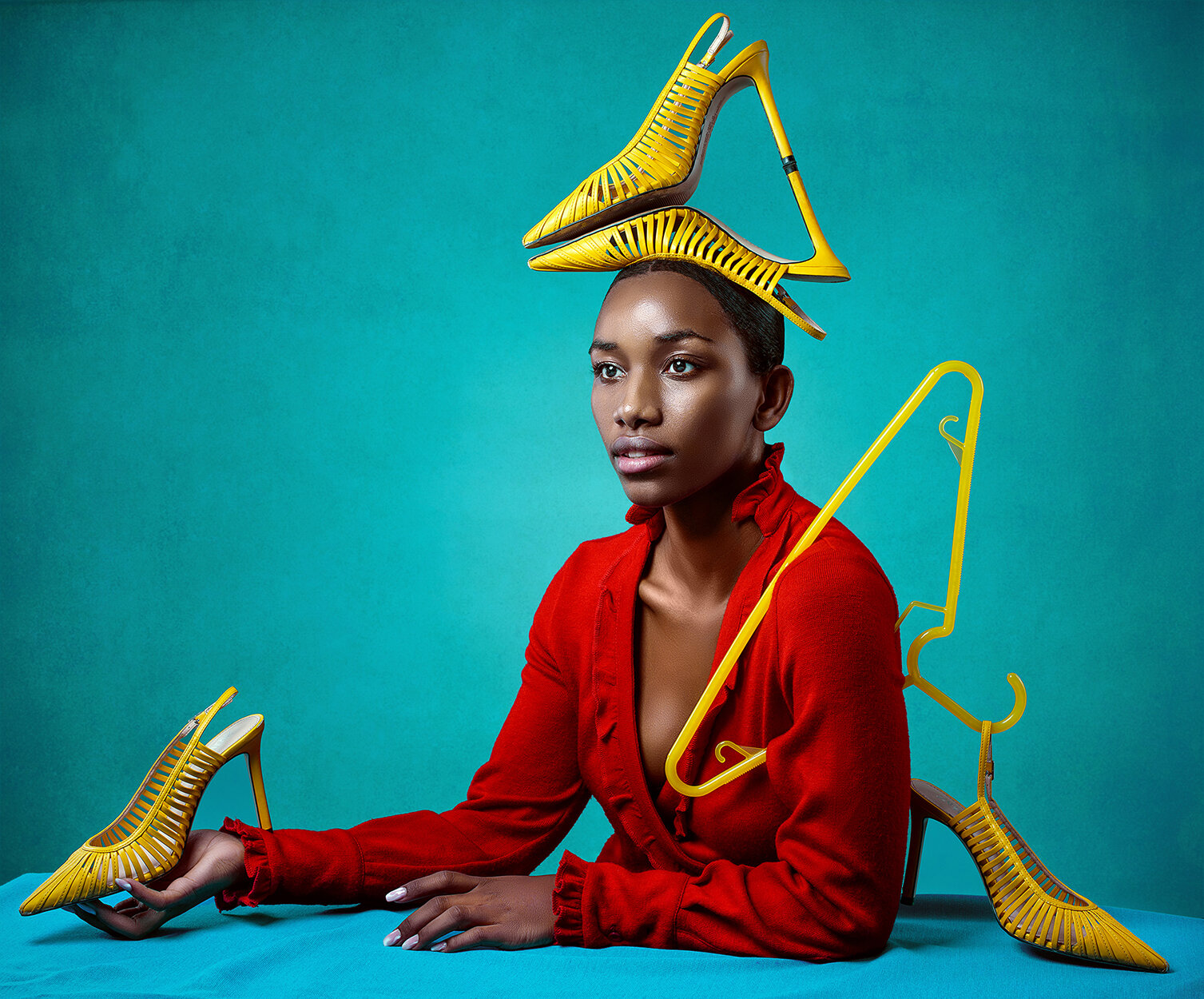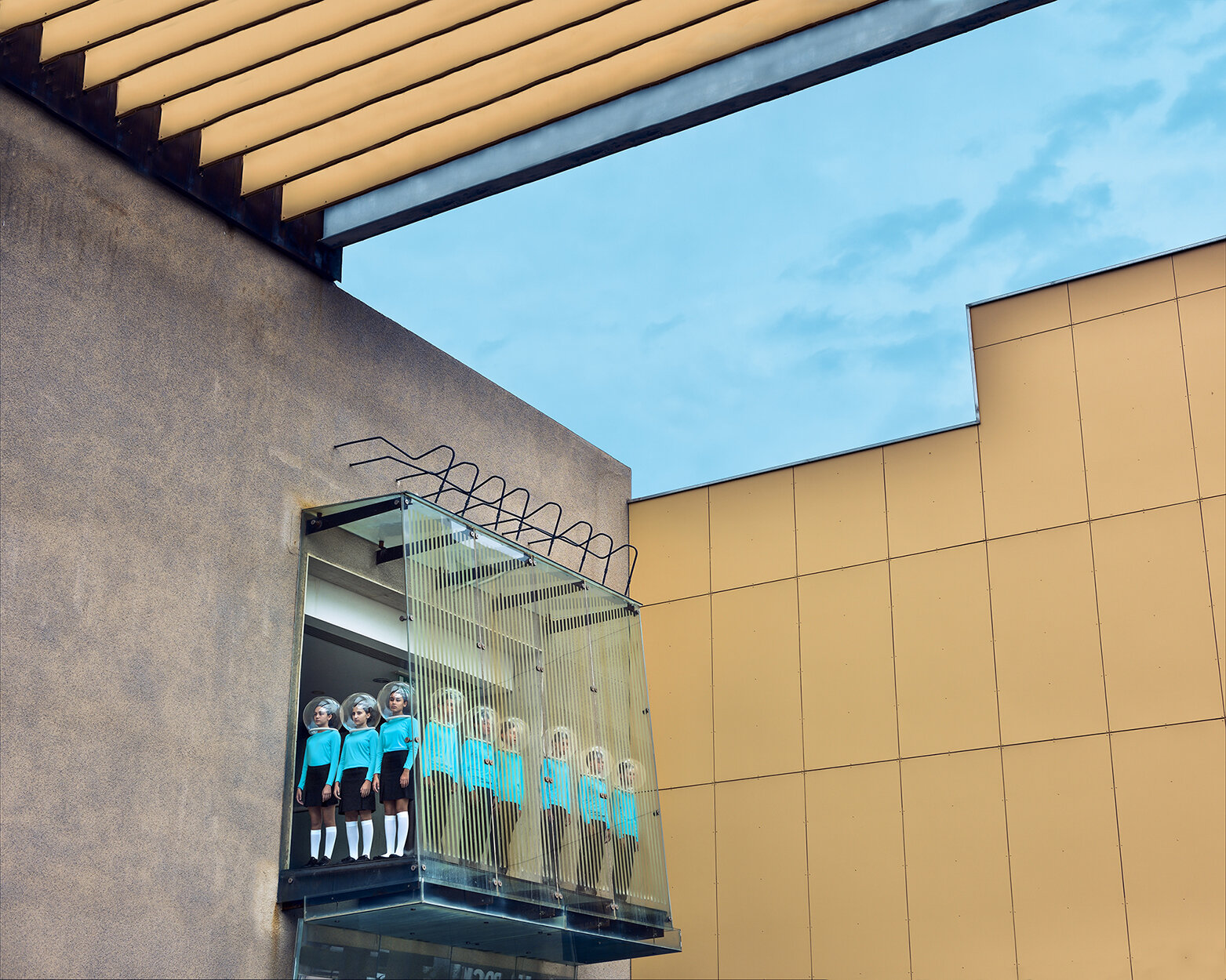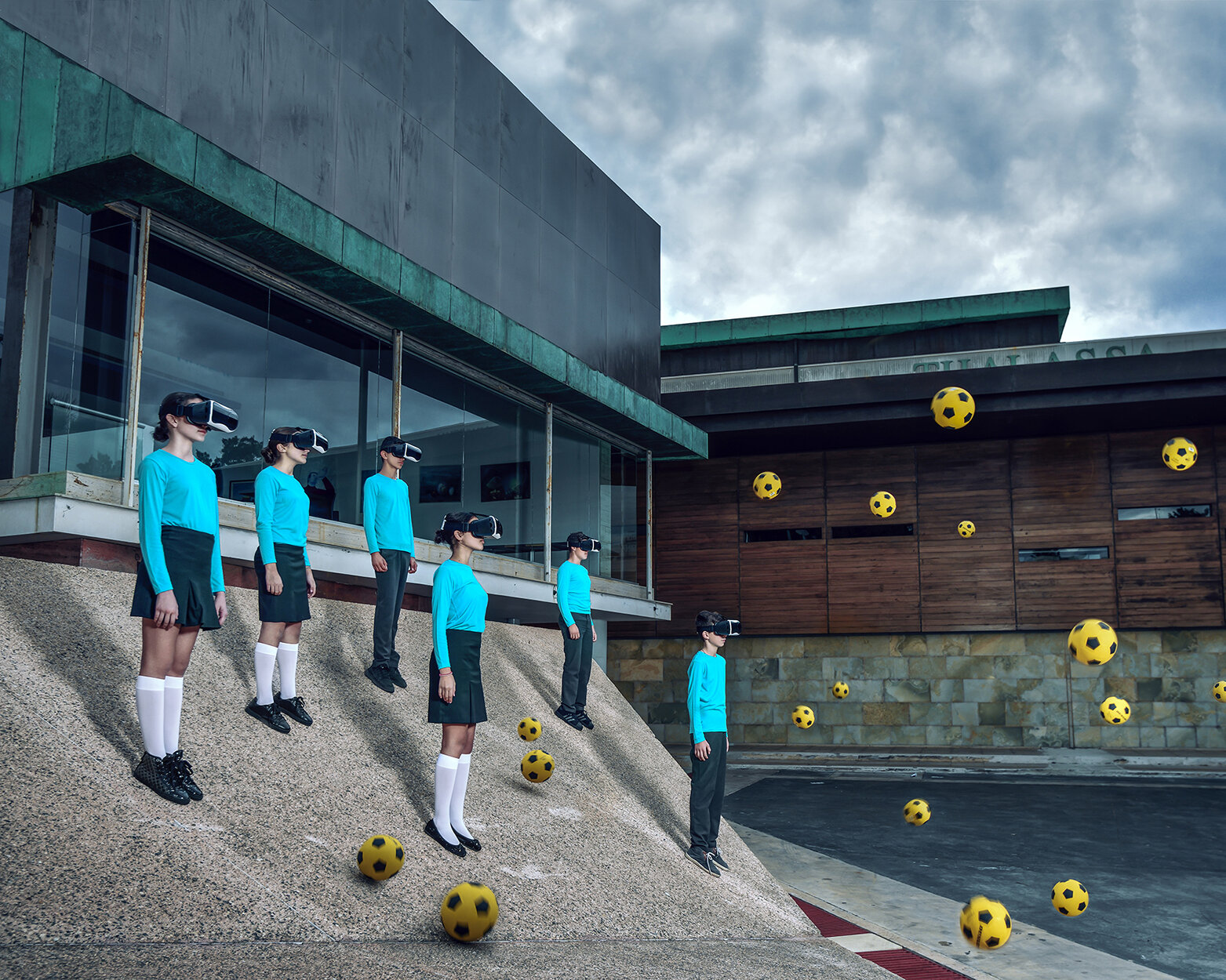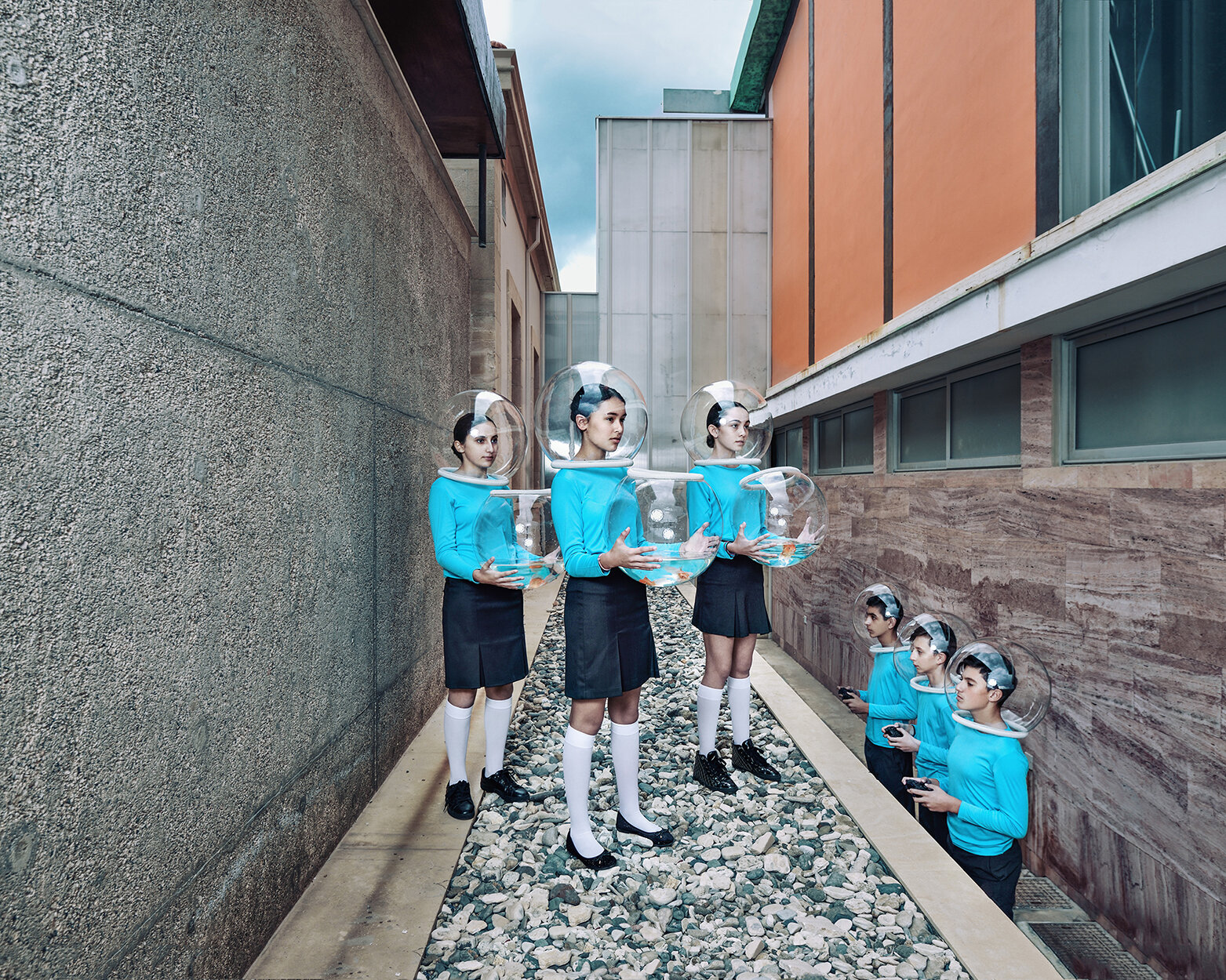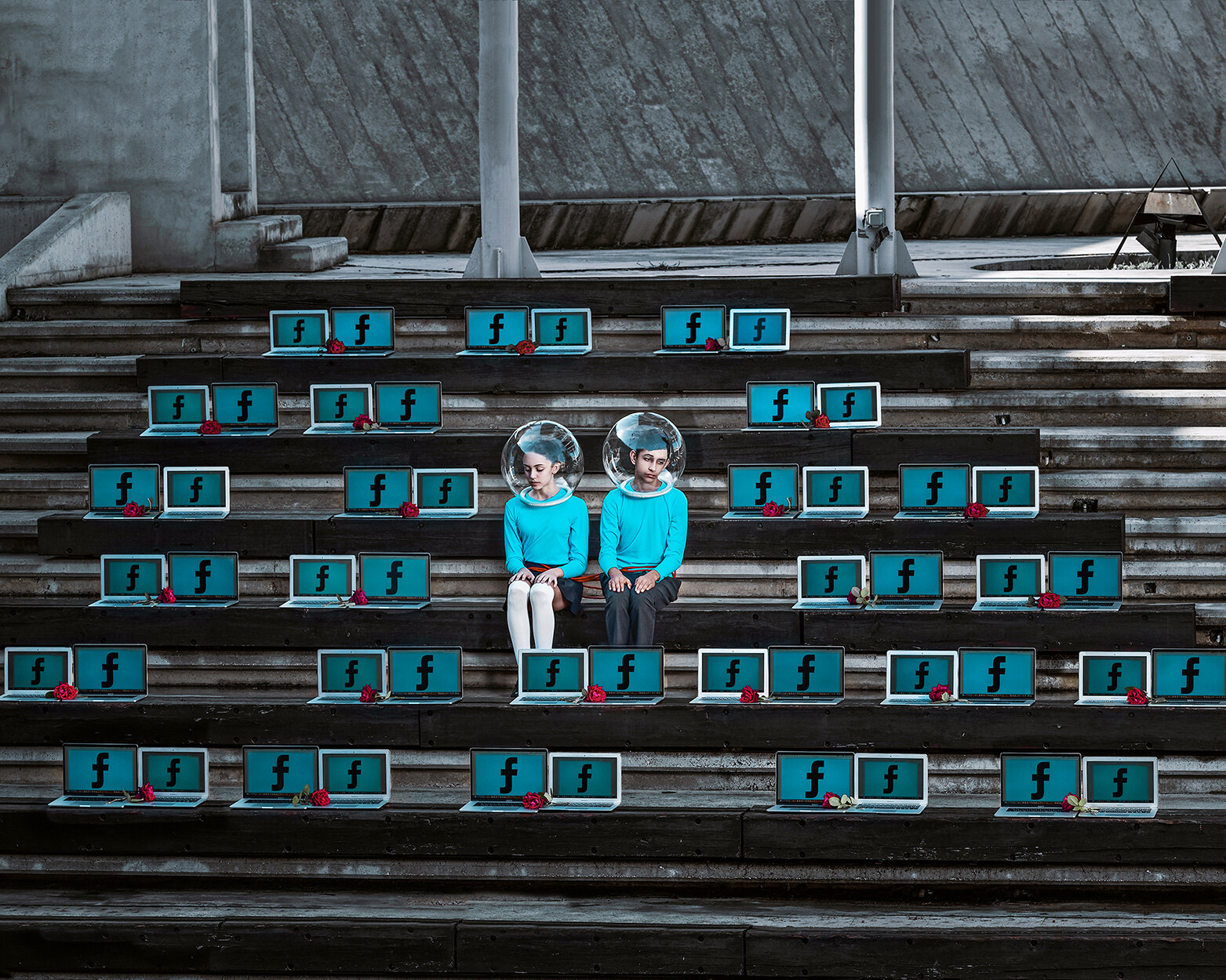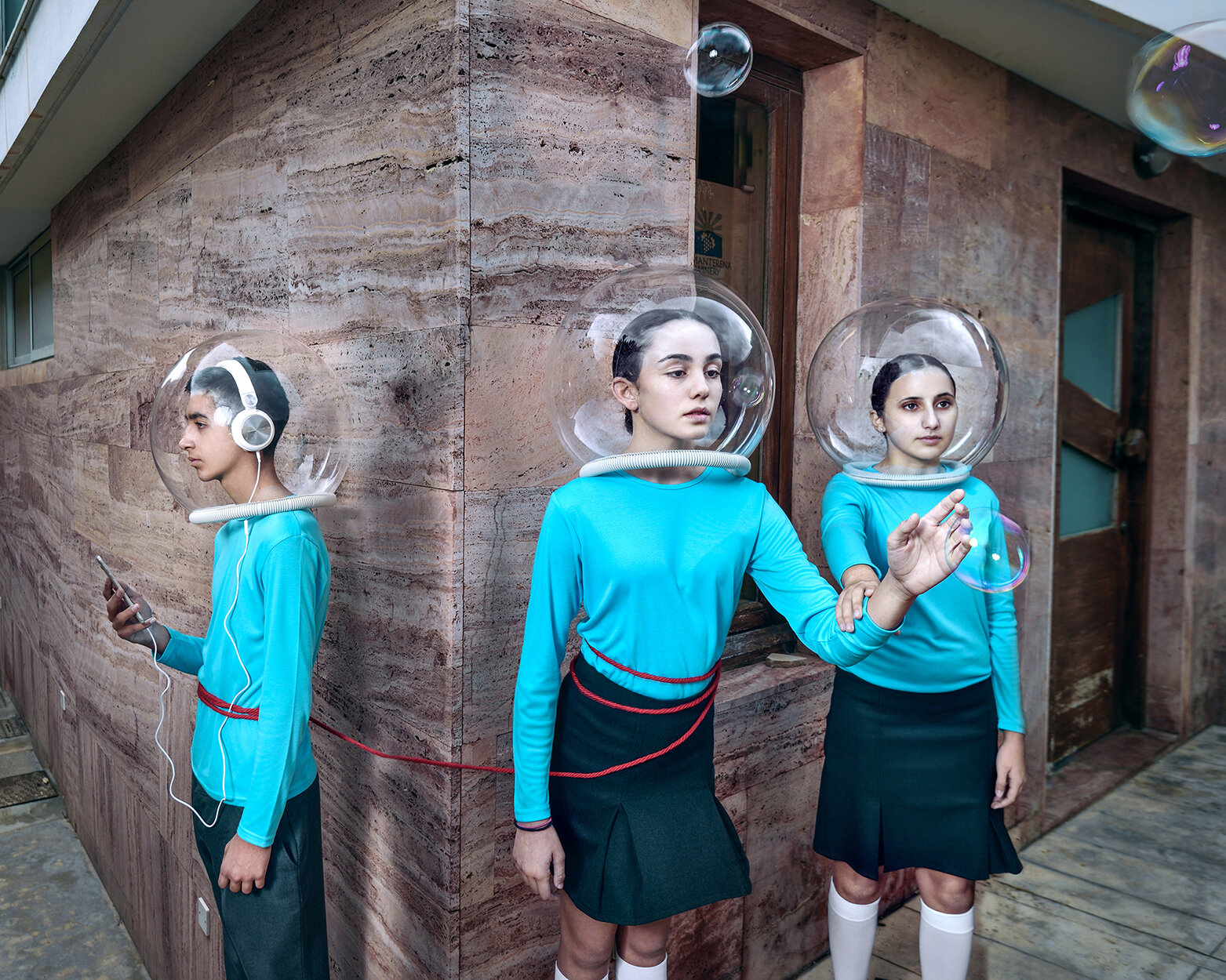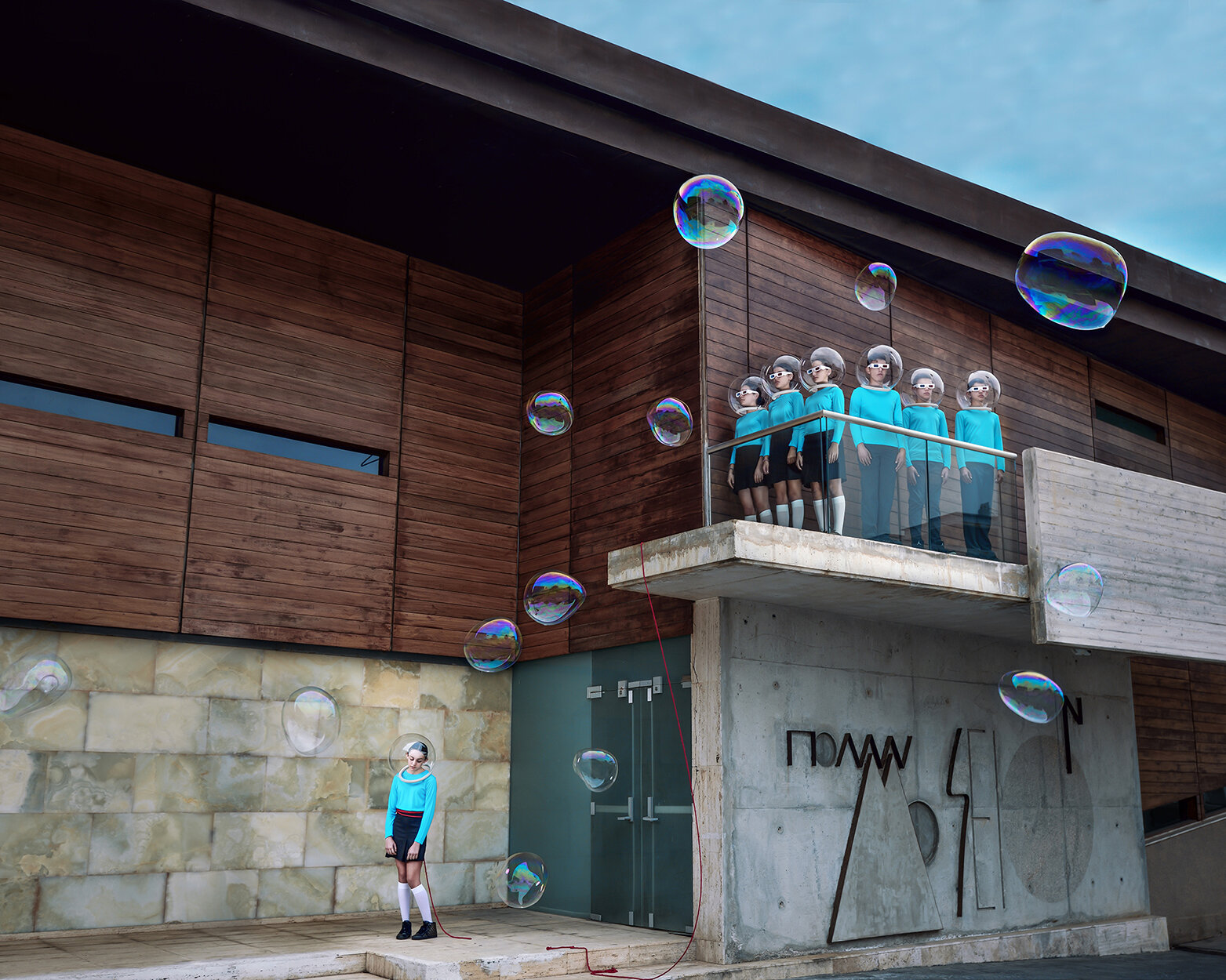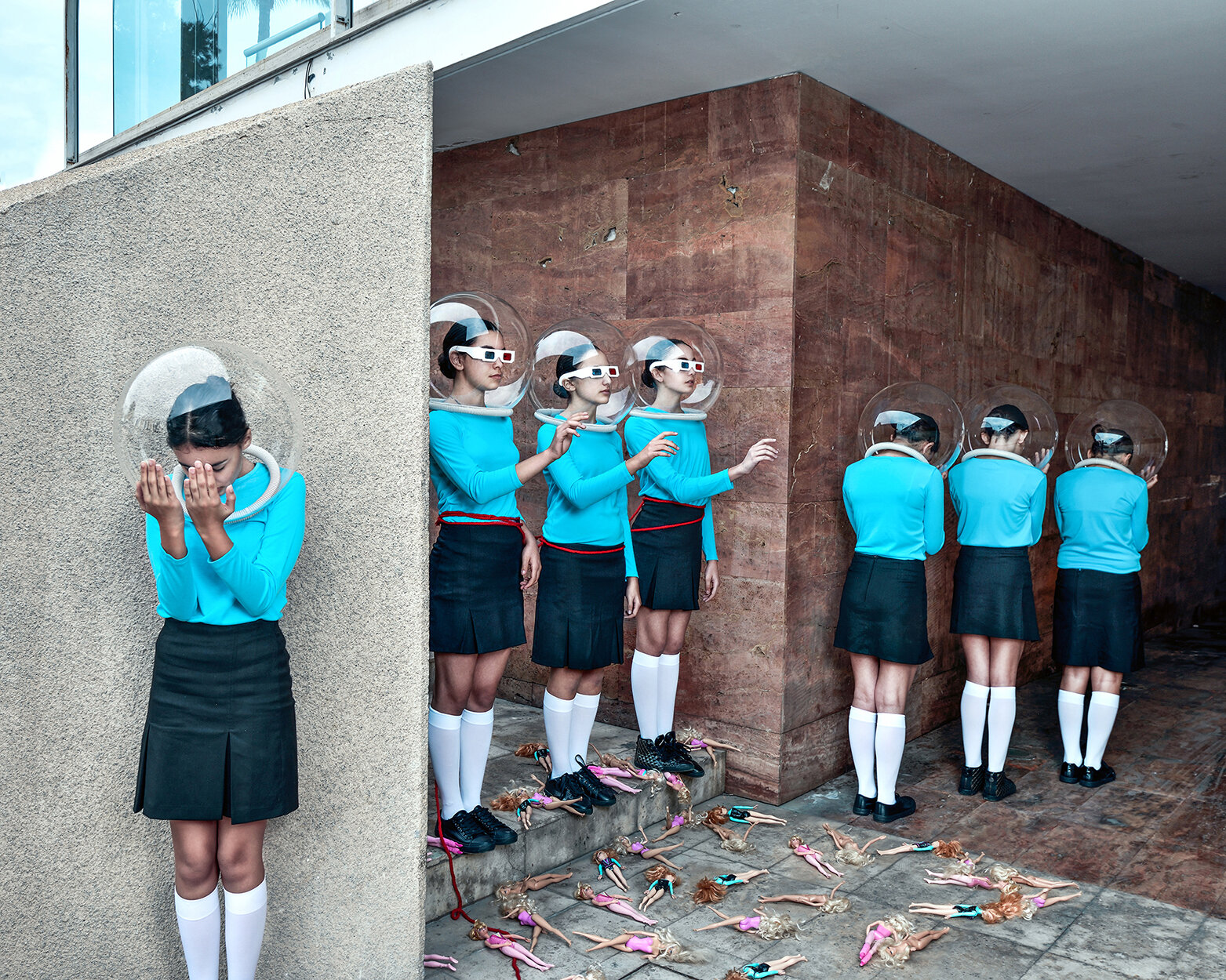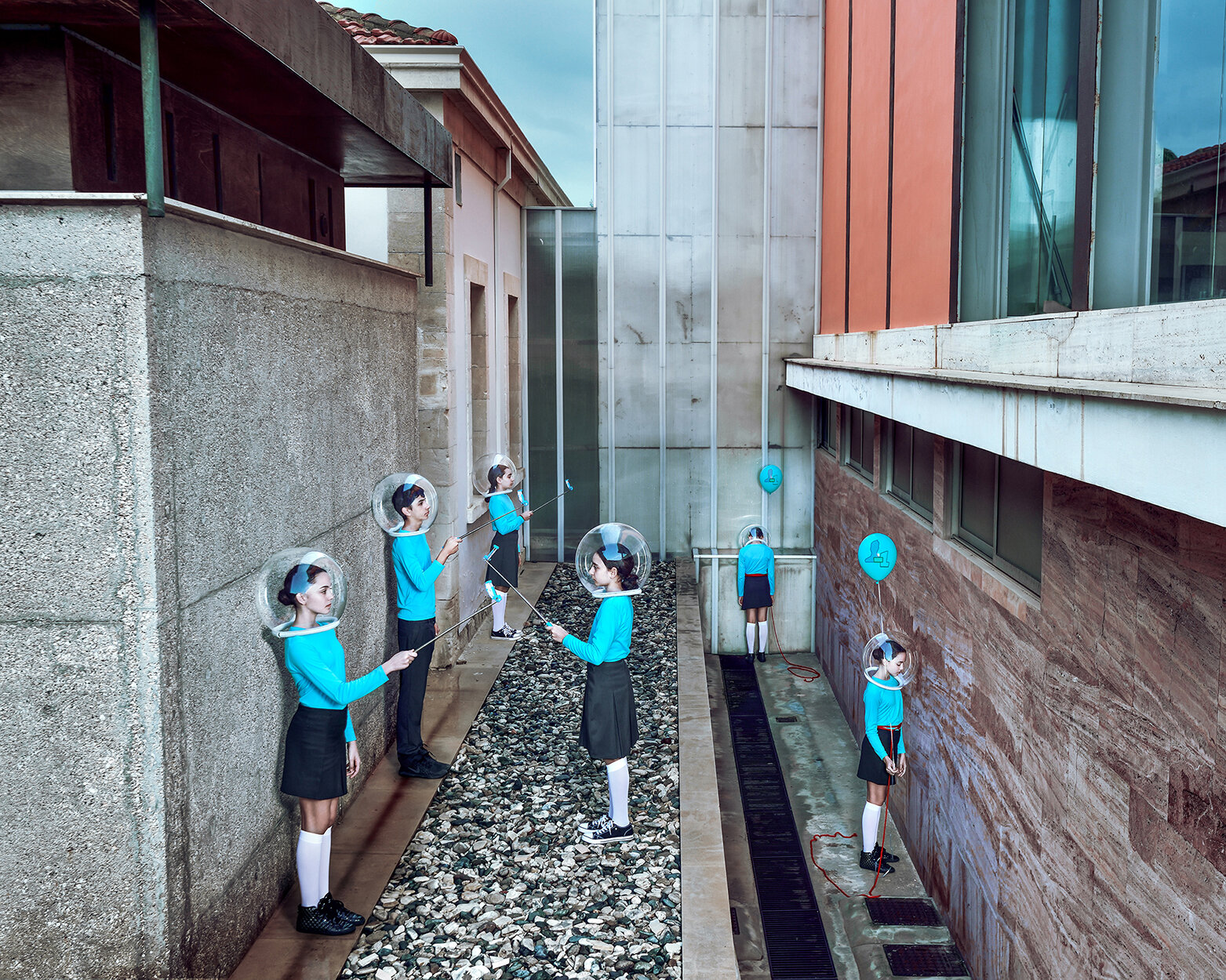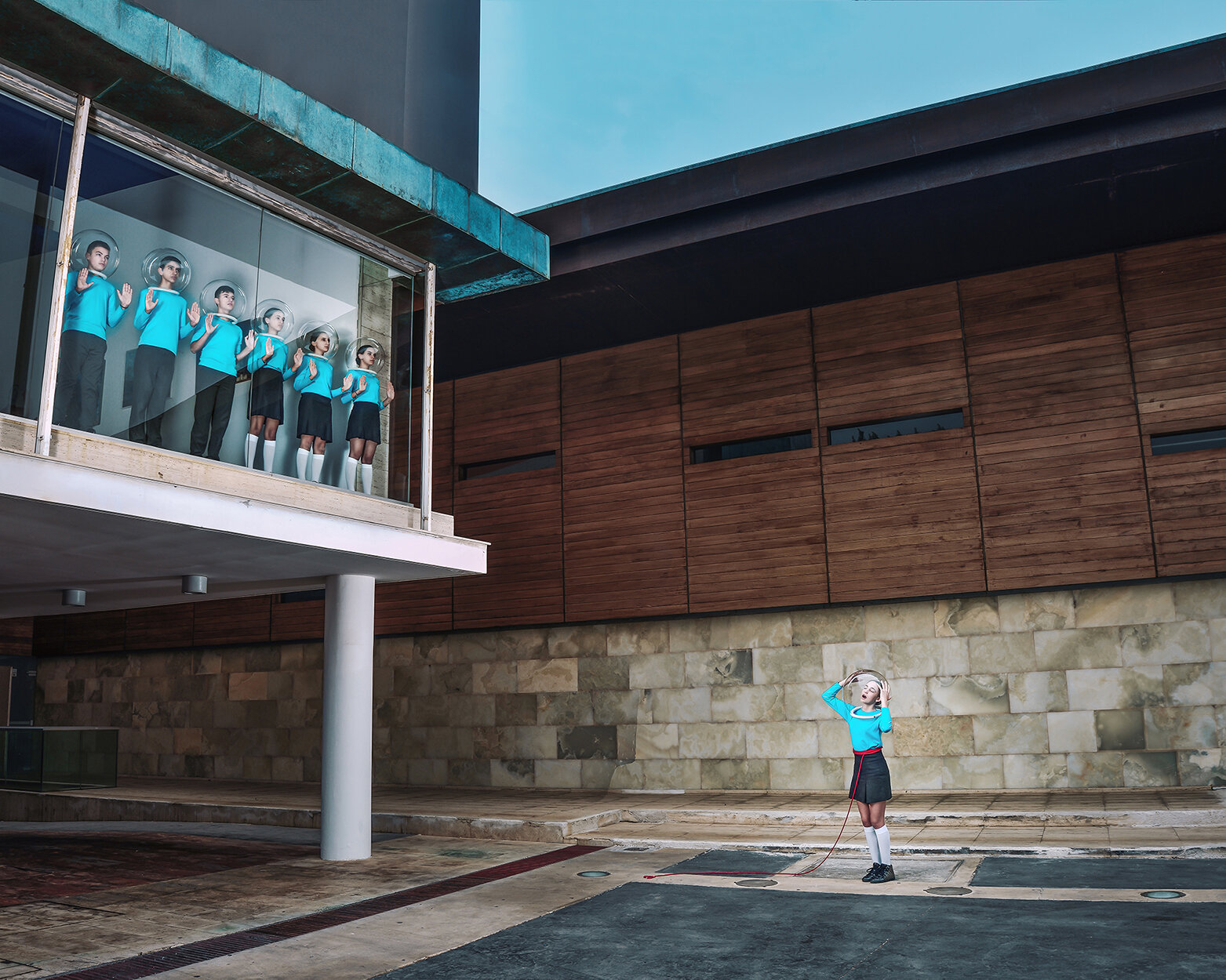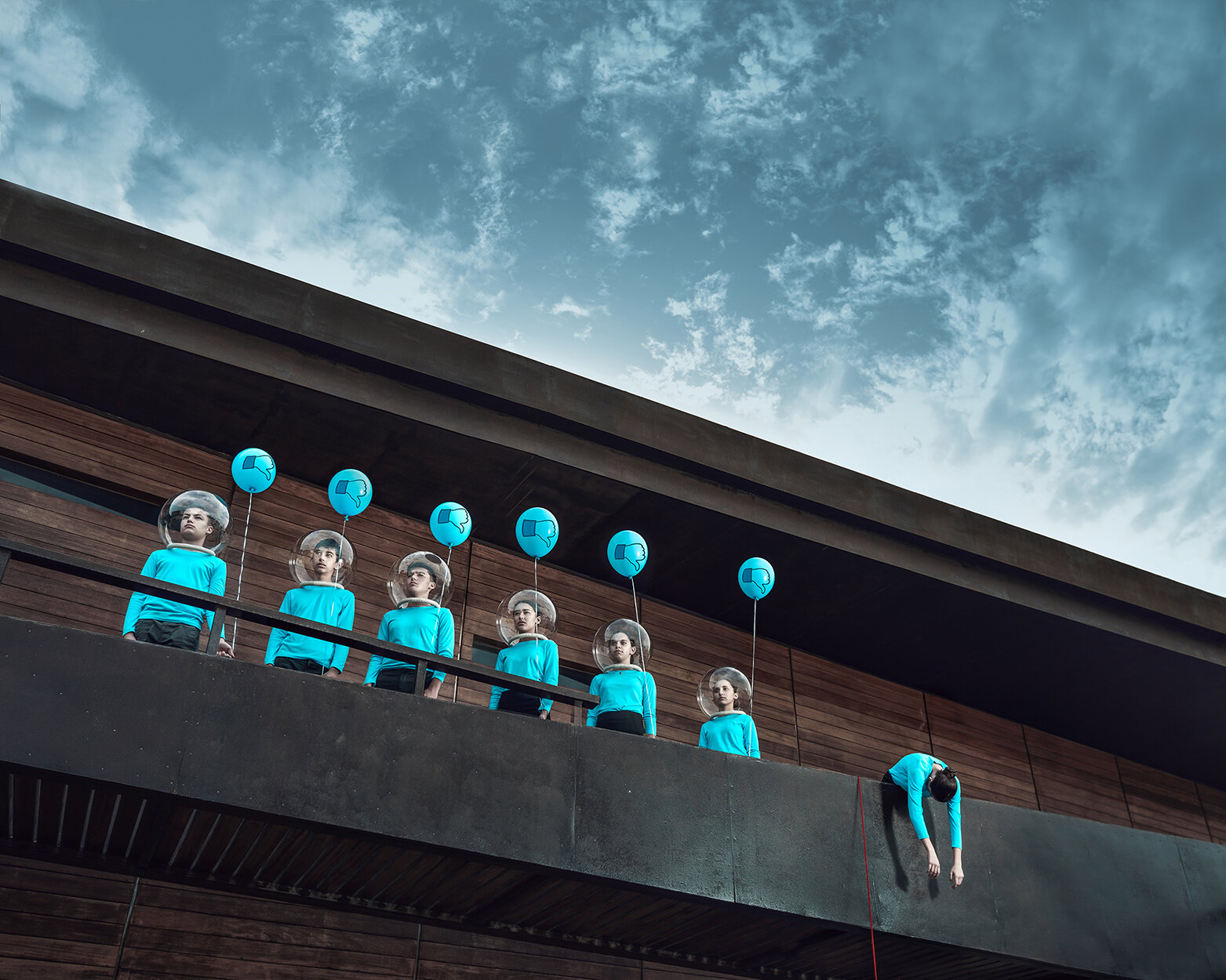Elena Paraskeva
Multi award winning, Elena Paraskeva, is an international conceptual Photographer and Art Director. Having worked in the U.S for a decade, she now lives in Cyprus,
Elena creates surrealistic conceptual work bathed in colour. She draws her inspiration from popular culture and everyday life.
As a professional photographer Elena has worked for numerous publications in the US and the U.K. and has been commissioned by large companies, institutions and Universities including The Australian National University. One of her regular clients is Affinity, Adobe’s Photoshop competitor, for which she creates images and educational videos.
Digital Camera Photographer of the Year of 2018, Elena’s success was widely featured in the press including The Sunday Times. She has won several gold and silver medals in international competitions including the LensCulture Portrait Awards and several of her works have been exhibited in galleries in New York, London, Paris, Austria, Tokyo and of course Cyprus.
We caught up Elena for a brief interview.
Wellcome to Chromatica Magazine, thank you for joining us,
How are you? how are you coping with the pandemic?
As a photographer, there’s nothing more pleasing than expressing my creativity via a conceptual portrait, but the ability to do so freely has been greatly diminished since March of 2020. How does one achieve clarity of emotions via a portrait when everyone is hidden behind the veil of enforced protectionism? I’m in a creatively dark mood right now, and i’m actively promoting my thoughts on the current situation via my series “Vacant Children”. The series was created 2 years ago and was intended to showcase children living in a dystopian society in which genuine social interaction is almost non-existent, only held together by an imaginary thin red thread. This is a society of mental and physical isolation and children are its unsuspecting victims. They are goldfish in a small bowl, and the words, “love” and “friendship” exist only in a virtual world. Consequently acceptance in the form of a simple “like” becomes so essential for their self-worth, that its simple withholding is seeing as automatic rejection with often destructive results.
The series has been featured in magazines abroad and in national newspapers in my country of Cyprus as a message and warning about the results this so called “New Normal” and the enforced isolation and imprisonment that comes with it .
At what age did you discover your passion for photography?
Believe it or not my background is actually in Finance and Marketing as an executive in the US. Photography came into my life as the positive byproduct of a mysterious bacterial illness that kept me confined to my home for a year, approximately 7 years ago. Once i got my health back, I discovered i needed to be outdoors as much as possible, as close to nature as I could. I then bought my first camera and spent hours photographing landscapes. I soon discovered that i needed more, i needed to express what was going on in my head and the only way to do it was through portraiture, albeit not traditional portraiture. I felt that to make a mark I needed to go beyond the traditional and beautiful for the sake of beauty, but attempt to convey a message in every image. Initially and as part of the necessary learning curve, i went through a process of experimentation which meant utilizing various styles in my imagery that were at times contradictory. Pleasing in their own right, but together, perhaps not as cohesive or identity-defining.
What are your main influences? Which artists have informed your art?
I am a big admirer of Eugenio Recuenco and Erwin Olaf not only for their storytelling abilities and imagination, but also their amazing style which evokes past eras but somehow comes off as completely modern and relevant. By studying their work, i realized that finesse, subtlety, proper aesthetic, details when it comes to lighting and a cleverness in conveying your message that is not instantly and fully absorbed at first glance was essential in getting to the next level.
Having said that, i’m an artist who adores color and as such I’ve very drawn to the works of Pol Kurucz
Often surrealistic or conceptual, vibrant colours are an integral part of your creations. How important is colour to you? (Symbolism, dreamscapes, surrealism, emotions it evokes) what is your favourite palette?
I just love the way “lightness” of the image can be achieved via color even though the message can be serious or even downright dreary. And such is my style, highly conceptual, but also highly stylized with an affinity for pastel tones. My series “The Lost Swimmer” for example, is visually pleasing and “airy” due to the color palette, but the message is one of self-doubt and inability to achieve one’s potential. The character in the form of a swimmer is so close to her goal (in the form of water) she can touch it, but in her mind, she’s miles away, afraid to take the necessary next step and thus, ends up drowning in self-loathing and despair.
From idea to the final image, can you walk us through your steps? How complicated is your process?
Creating a series is very challenging, but also highly rewarding and I’ve received the most recognition internationally for these cohesive bodies of work rather than one off images. These require taking out a piece of paper and writing down the entire storyline from scene one, to the final scene, just like a script. The characters, the location, what they are doing, what they are feeling. Then I encompass props into the storyline that can either indirectly present the message or enhance it. Then I move on to styling which includes type of clothing (era-wise), hairdo etc and the last thing is drawing lighting diagrams once I have figured out where I’m going to shoot as it is crucial that lighting retains the same character throughout the scenes. The same goes for post-processing. I highly value colour grading as a critical component in achieving a certain style for each series, so I create a series of actions that I apply to the images at the very end of the editing process.
What are you trying to convey through your work? and what are your plans for the future?
Currently I’m in the process of shooting a series called “Paralysis”, which deals directly with the current situation across the planet, but our country is enforcing strict lockdowns once again so it might take a bit longer than originally anticipated. I am determined though, always have been because I’m a great believer in speaking out, particularly via art as the message can be sustained long-term and can be more impactful than just words.
Thank you for you time
For more info and updates visit Elena’s official page www.elenaparaskeva.com


